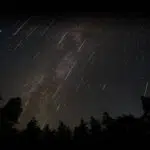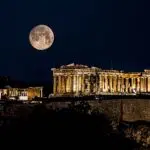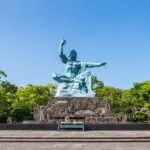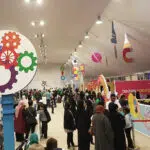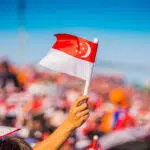Nagasaki Memorial Day is observed annually on August 9 in Nagasaki, Japan, commemorating the victims of the atomic bombing during WWII. Nagasaki was the second city after the first bombing three days earlier of the city of Hiroshima. So far, Japan is the only country that suffered nuclear attacks during a war. In 2017, the General Assembly of the United Nations adopted the Prohibition of Nuclear Weapons Treaty, which contains a comprehensive set of prohibitions on participating in any nuclear weapon activities. The treaty commenced on January 22, 2021.
History of Nagasaki Memorial Day
On August 6, 1945, to compel Japan to surrender and end World War II, U.S. bomber Enola Gay dropped Little Boy, the first atomic bomb ever used in wartime, on the Japanese city of Hiroshima. The explosion killed an estimated 80,000 people, and thousands more died later because of radiation exposure. Japan had caused many Allied casualties during the war, and despite the devastation, did not surrender. As a result, the U.S. decided to drop a second bomb to compel Japan to surrender.
On August 9, 1945, three days after the first hit, U.S. bomber Bockscar dropped a bomb called Fat Man on the city of Nagasaki. The bomb contained power equivalent to 22,000 tons of T.N.T. The explosion had devastating consequences on Nagasaki, causing the death of an estimated 40,000 people. More inhabitants died later from burns, radiation sickness, and other injuries. But, the bomb’s effect was diminished, because Nagasaki was nestled in narrow valleys between mountains and had a smaller population. After this second bombing, Japanese emperor Hirohito announced his country’s surrender on a radio broadcast on August 15, 1945 (Japanese time).
On September 2, 1945, a formal surrender agreement was signed aboard the American battleship U.S.S. “Missouri” anchored in Tokyo Bay, leading to the end of World War II. The two bombings caused the deaths of an estimated 70,000 to 135,000 people in Hiroshima and 60,000 to 80,000 people in Nagasaki. For that reason, Nagasaki Memorial Day is observed to commemorate the bombing victims, promote peace and raise awareness of the importance of avoiding more wars and the destructive potential of nuclear weapons.
Nagasaki Memorial Day timeline
The first atomic bomb ever used in war is dropped on the Japanese city of Hiroshima.
The second atomic bomb is dropped on the Japanese city of Nagasaki.
Japanese emperor Hirohito announces Japan’s surrender on a radio broadcast.
The formal surrender agreement is signed by Japanese foreign minister Mamoru Shigemitsu and general Yoshijirō Umezu.
Nagasaki Memorial Day FAQs
How many died at Pearl Harbor?
The attack resulted in the death of more than 2,403 people, including 68 civilians.
What was the original target for the atomic bomb?
Kyoto and Hiroshima were the primary targets of the atomic bombings.
What would happen if Japan didn't surrender?
After the United States detonated the first atomic bomb over the Japanese city of Hiroshima on August 6, 1945, American President Harry S. Truman called again for Japan’s surrender, warning them to “expect a rain of ruin from the air, the like of which has never been seen on this earth.”
How to Observe Nagasaki Memorial Day
Spread the word
The bombings in both Hiroshima and Nagasaki caused untold destruction and cost so many lives. Spread the word to ensure that people remain aware that war leads to nothing but destruction.
Visit Nagasaki Peace Park
Visit Nagasaki Peace Park to commemorate the atomic bombing victims. There are Peace Symbol Zones that house monuments donated by countries around the world. You can also visit Nagasaki National Peace Memorial Hall for the Atomic Bomb Victims nearby.
Visit the Nagasaki Atomic Bomb Museum
Pay a visit to the Nagasaki Atomic Bomb Museum and learn more about the history of the atomic bombing of Nagasaki. Be reminded that war is horrific enough, to begin with, not to mention the aftermath.
5 Facts About Nagasaki You Need To Know
It was originally a fishing village
Nagasaki was originally a fishing village with little historical significance until it became an important trading port in the 1550s.
It has a World Heritage Site
Hidden Christian sites in the Nagasaki Region, recognized as a World Heritage Site on January 30, 2018, are located in Nagasaki Prefecture, Kyushu.
There is a famous abandoned island
Hashima Island commonly called Gunkanjima is an abandoned island that is a reminder of Japanese war crimes as a site of forced labor.
There is “the Netherlands” in it
Huis Ten Bosch is a theme park in Sasebo, Nagasaki, recreating the Netherlands by displaying life-sized copies of old Dutch buildings.
It has one of Japan’s largest Chinatowns
Nagasaki Shinchi Chinatown is one of the three largest Chinatowns in Japan.
Why Nagasaki Memorial Day is Important
It’s a reminder
Looking back at history, we realize that war is a complete disaster. We should always try our best to avoid it, and peace should always be the only option for everyone.
It’s to raise awareness
We all want to live in a safe world. Nagasaki Memorial Day raises awareness that eliminating nuclear weapons remains a priority, so there would be no more ‘hibakusha.’
It’s a chance to expand horizons
Nagasaki Memorial Day is a chance for us to expand our horizons. We can learn more about the history of our own country, about war, and in particular, about why nuclear weapons should never be developed.
Nagasaki Memorial Day dates
| Year | Date | Day |
|---|---|---|
| 2025 | August 9 | Saturday |
| 2026 | August 9 | Sunday |
| 2027 | August 9 | Monday |
| 2028 | August 9 | Wednesday |
| 2029 | August 9 | Thursday |



